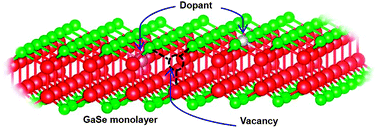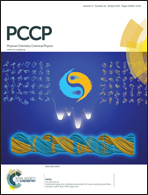Functionalization of a GaSe monolayer by vacancy and chemical element doping
Abstract
Based on first-principles plane-wave calculations, functionalization of the two-dimensional single-layered GaSe structure through vacancy and chemical element doping has been investigated. Our calculations show that the pristine GaSe monolayer, which is normally a non-magnetic, indirect-band-gap semiconductor, can induce net magnetic moments by introduction of Ga mono-vacancy, Ga di-vacancy, and GaSe3 and Ga2Se6 vacancy complexes. Magnetic moments can also be induced by selectively doping specific transition-metal atoms as well as A group atoms. The introduced donor or acceptor states are localized in the band gap, which expands the utilization of the single-layered GaSe in nanoelectronics and spintronics. In spite of the intrinsic p-type character of the two-dimensional GaSe material, substitution of Si for Ga and substitution of Cl for Se exhibit n-type character at relatively low dopant concentrations. These findings will provide useful supplements to the experimental studies on the newly synthesized two-dimensional layered metal monochalcogenides, which allows us to go beyond the current scope that is limited to applications within graphene, BN, and transition-metal dichalcogenide-based nanostructures.


 Please wait while we load your content...
Please wait while we load your content...